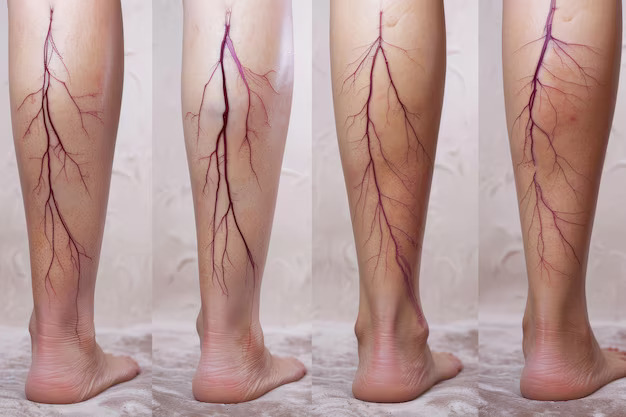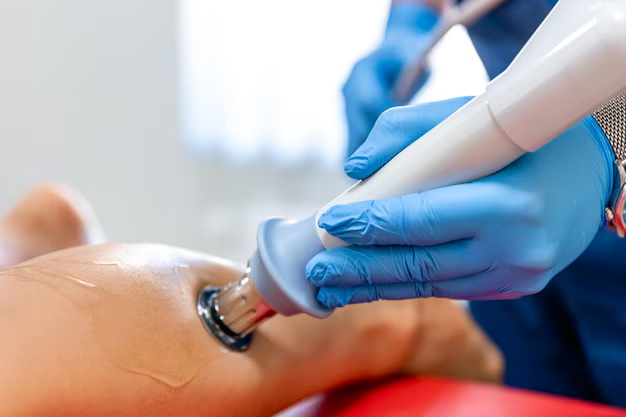In treating patients in pain every day, there are instances where medical intervention can be lifesaving. Today’s story revolves around a patient grappling with a pinched nerve in the upper back, leading to excruciating “upper back stomach pain” that pushed him to the brink of despair. Revisiting his journey, the article sheds light on medical errors, the complexities of upper back issues, and the triumphant path to recovery, aiming to offer insights that could potentially save others.
Thoracic Radiculopathy Explained
Thoracic radiculopathy, often a culprit in cases of upper back stomach pain, involves a pinched or irritated nerve in the upper back region. Typically associated with lower thoracic nerves, this condition arises when a disc bulge or herniation affects the spinal nerve’s exit point.
Link Between Upper Back and Stomach Pain
The connection between upper back and stomach pain lies in the transformation of the spinal nerve into an intercostal nerve. Tracing its path around and under the ribs to the stomach area, this explains the seemingly unrelated symptoms.
Challenges in Addressing Thoracic Spine
Acknowledging the medical community’s tendency to overlook the thoracic spine is a crucial step toward understanding the challenges that both patients and healthcare professionals face in addressing issues in this specific region of the spine. The thoracic spine, often referred to as the “No Man’s Land” of the spinal column, encounters distinctive challenges that contribute to its frequent neglect.
One primary factor contributing to the oversight is the inherent technical difficulties associated with the thoracic spine. Unlike the more accessible cervical (neck) and lumbar (lower back) regions, the thoracic spine poses a unique set of challenges for medical practitioners. Its intricate anatomy and the proximity of vital structures make interventions more technically demanding. The intricate network of nerves, joints, and ribs in this region requires a high level of precision, making it less approachable for certain medical procedures.
Residency and fellowship programs, essential for the training of healthcare professionals, often allocate limited time and emphasis to the thoracic spine. The technical demands and complexity of the procedures involved in addressing thoracic spine issues can make it a less attractive focus for training programs. Consequently, many practitioners may not acquire the specialized skills required to effectively manage conditions affecting the thoracic spine.
Moreover, the thoracic spine is sandwiched between the well-studied cervical and lumbar regions. This anatomical placement can lead to an oversight bias, with medical professionals focusing more on areas where conditions and treatments are more extensively documented. The lack of emphasis on the thoracic spine can result in delayed diagnosis and inadequate management of patients experiencing upper back issues.
As a consequence of these challenges, patients with thoracic spine-related problems may face delays or misdiagnoses. The delayed recognition of issues in this region can exacerbate symptoms and hinder timely intervention. Addressing these challenges requires a concerted effort within the medical community to enhance education and training specific to thoracic spine care.
Potential Problems in the Upper Back
Exploring the myriad issues that can plague the upper back, from disc problems to facet joint and rib-related issues, the complexity of this region becomes apparent. Ignoring such complexity can have serious consequences.
Importance of Comprehensive Spinal Care
The interconnected nature of different spine regions is discussed, underscoring the need for a comprehensive approach to spinal care. Ignoring any part of the spine can lead to significant oversights.
Patient’s Journey to Recovery
Detailing the patient’s experience, the article unfolds the medical mistakes made during the initial stages and the subsequent successful treatment that led to a remarkable improvement in the patient’s condition.
Key Takeaways for Patients and Medical Professionals
Summarizing the lessons gleaned from the patient’s story, the article provides valuable advice for individuals experiencing similar symptoms and offers guidance for healthcare professionals to enhance patient care.
Conclusion
Reiterating the patient’s progress, the article concludes by emphasizing the critical importance of addressing upper back issues promptly. The narrative serves as a testament to the potential of effective intervention in saving lives.
Frequently Asked Questions
1. Can upper back issues really cause stomach pain?
Yes, upper back issues, particularly thoracic radiculopathy, can cause stomach pain. When a spinal nerve in the upper back is pinched or irritated, it can result in pain that radiates around the ribs to the stomach area.
2. How common is thoracic radiculopathy, and what are its symptoms?
Thoracic radiculopathy is relatively uncommon compared to similar issues in the neck or lower back. Symptoms may include upper back pain, numbness, tingling, or weakness in the affected area.
3. Why do some medical professionals overlook the thoracic spine in pain management?
The thoracic spine is often overlooked due to technical challenges in addressing this area. Additionally, there is a significant overlap between the neck and thoracic spine, making it more complex. This can result in a lack of emphasis on thoracic spine issues in medical training.
4. What are the potential treatments for upper back stomach pain?
Treatment options may include physical therapy, medication for pain management, and in severe cases, surgical intervention. Addressing the underlying cause, such as disc bulges or herniations, is crucial for effective treatment.
5. Are there preventive measures to avoid thoracic spine-related problems?
Maintaining good posture, engaging in regular exercise that strengthens the core and back muscles, and avoiding prolonged periods of sitting can help prevent thoracic spine-related problems. Regular check-ups with healthcare professionals are also essential for early detection and intervention.










